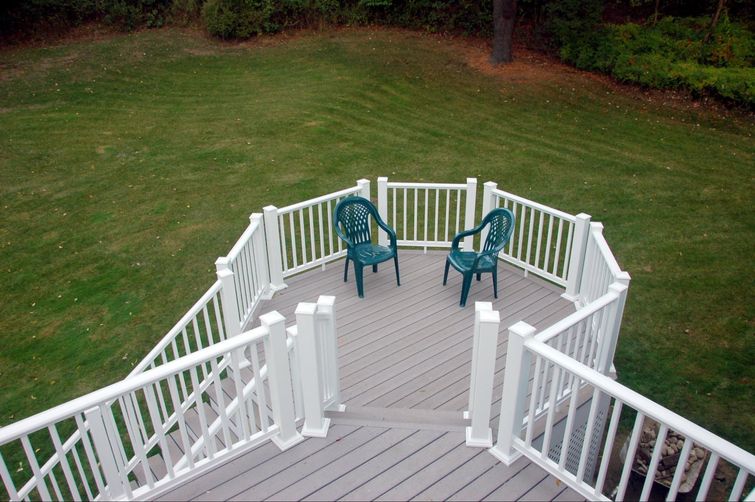
What Is Composite Decking?
Advantages
- It's very durable
- No need to stain or paint
- No risk of rotting, splintering, warping or cracking like wood decking
- Low maintenance
- Weather-resistant
- Slip-resistant
Durability

Composite decking material is durable because has more resistance to conditions that would cause harm to a wood deck. Composite (especially capped composite) is weather-resistant and water-resistant, as it is impervious to water, unlike a wood that will absorb water. Water absorption in a wood deck leads to rot, bulging, warping and splitting as it expands or dries out over time.
Composite materials colour will last longer than a stained or painted wood deck, and it does not require annual or biannual treatment or stain to extend the deck’s life. Composite boards are durable as they have a resistance to surface stains and scratches requiring less upkeep for the homeowner.
Longevity
Arguably the greatest benefit for the use of composites is the longevity of the product. Composites can withstand severe weather conditions and rot for decades without any added treatment or protection.
Most companies like Trex have a 20-year warranty on their decking composite while some companies have their warranties going up to 50 years for their composites. On average, a composite deck would last you 20-30 years, about 10 years more than wood decking.
Options
Composites can come in a variety of choices for colour and patterns. Most are made to look like wood, but many brands like Trex offer options outside the natural-looking realm. Mimic a natural hardwood look with a wood composite that is embellished with wood grain textures or has a stand-out, unique grey or even red deck!
With composite, there is no guessing on the final colour of your deck unlike when it comes to staining or painting wood decking, you get the perfect colour that you choose with no games.
Less Maintenance

Disadvantages
- Some composite can look obviously fake
- Is not resistant to mould and mildew growing on its surface (especially in the shade)
- More difficult to replace when showing eventual signs of age or decay
- Tend to sag or bend more than wood decking does
Price
Is a Composite Deck Worth the Money?
You Can't Avoid Lumber Entirely
If you wanted to choose composite material because it uses fewer resources and be more environmentally friendly, just know that the use of wood is not avoidable. Standard wood decks and composite ones have similar impacts on the environment. Some composite brands use a greater amount of recycled materials in their products like Trex states they do, but this is product-dependent and not an industry standard.
Composite might be made of recycled plastic, but wood is still needed to create the structural frame of any composite deck. This is done for optimum durability and structural stability and performance as composite is not as solid structurally as wood. Treated lumber is used for posts, joists, beams and stair stringers and decking contractors rely on the strength of lumber for the framework, trim and components for railings.
Less Versatility
More Support is Needed

Composite can be heavy. The average weight of composite decking is twice the weight of treated pine and three times the weight of cedar. This does not affect your deck once it has been built, but during the construction process the more weight, the more time construction will take.
The increased weight and tendency to sag require more support, increasing deck framing price and labour compared to the construction of a wood deck. Composite decks require more joists with smaller spacing in between joists with every end needing to be supported by a block, all increasing costs. Because of this, composite decking’s framing is more tedious and costly than wood decking.
Fading and Replacement
Final Thoughts
When comparing decking materials for your outdoor construction project it’s important to know your needs and weigh the pros and cons of your options. Composite is worthwhile as it has a resistance to rot, fading, and scratches while having either a unique or raw-looking appearance. Consider looking at popular brands like Trex for more information on the performance of their individual products.








